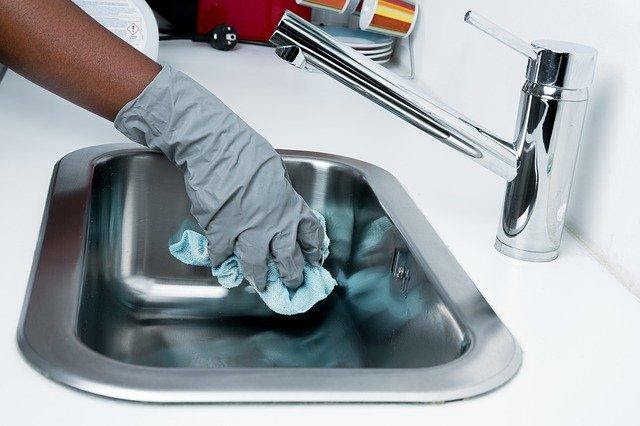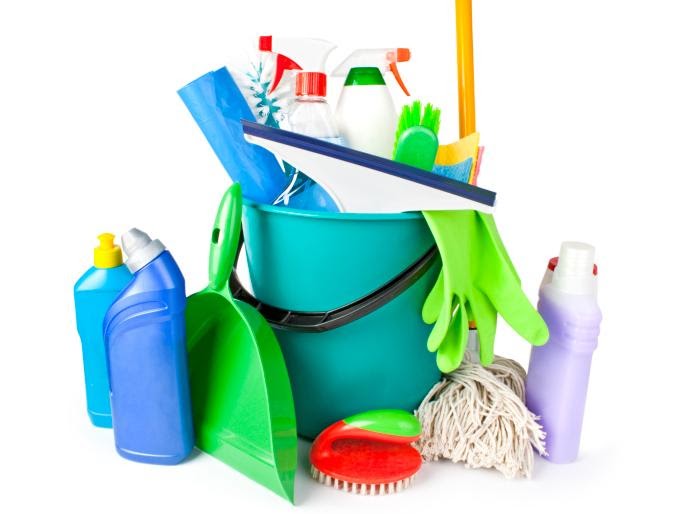When we first move into our home, many of us spend time unpacking and finding the ideal place for our possessions. It is only natural to take pride in our homes. Regular cleaning becomes part of our routine to ensure things look as nice as possible for as long as possible. However, over time, it is natural for general wear and tears to start to show. This may mean a new lick of paint is required in some rooms, perhaps new furniture to replace items that are chipped, or even having your pool cleaned.
You naturally want to use products that will not provide harm and do the job properly. The last thing you want is to ruin your home by using products that strip materials of their color or compromise their quality, nor do you want to use ineffective products, meaning you need to use them repeatedly to get the desired effect. This will not only become time-consuming but could also prove to be costly. With this in mind, we discuss some common household cleaning chores and provide suggestions to help you make your home sparkling clean.
CuLator Metal Eliminator and Copper Stain Release Formula
A common cleaning issue in most homes is copper stain. These can show on any item in your home that has copper, such as your toilet, shower, or pool. There are different methods you can use to rid your home of copper stains, although what you use will depend on the material of the item and how stubborn the stain is. For instance, it is recommended by thepoolstainremovers.com.au that whenever possible, you remove any copper in your pool, otherwise carefully manage it to avoid any copper staining from forming. Being aware of what could cause the staining is important so that you can observe any potential changes to your pool. These factors include:
- Copper-based algaecides
- Pool heater copper pipes
- Copper sulfate blocks
- Based Low-quality salts
- Chlorine-free pool systems
If you decide to wait, even a year, before you decide to do anything about copper staining in your pool, it could be too late. Copper staining can penetrate your pool interior, potentially causing permanent discoloration. However, you can avoid this by dealing with copper staining immediately. Using CuLator Metal Eliminator along with a copper stain-release formula will not only remove the stain but prevent it from recurring. An added bonus is you won’t need to drain your pool for this treatment, meaning you can enjoy your pool within seven days, copper stain free.
Vinegar and Salt
If copper stains are in your toilet, you may be able to use a simple acidic mixture of two or three cups of vinegar and salt, equal parts, leaving this mixture on your toilet bowl to soak in for approximately half an hour. Make sure you wear gloves when you wipe the mixture with a sponge to remove the copper stains.
Vinegar is around five percent acidic and so is considered mild. Vinegar can remove hardware deposits from glassware, discoloration from various metals such as brass, bronze, and copper. Lemon juice is also acidic and works in a similar way.
Household Ammonia: Ammonia and Water
A moderate alkaline cleaner household ammonia is simply made of ammonia and water. Being alkaline, it is a common cleaning product that doesn’t require excess rubbing against the item requiring cleaning. It not only removes grease but oily dirt as well. It is an ideal electric oven cleaner, tile cleaner and can be used to brighten any crystal glasses you may have in addition to many other things.
How you use household ammonia will vary according to what you’re cleaning. For instance, if you’re cleaning lackluster crystals to restore their original sparkle, add a few drops of ammonia into one cup of water. Use a soft cloth or brush to clean the crystal before rinsing off this mixture with warm water. Once this is done, use a soft clean cloth to dry it. This can be done fairly quickly, depending on the amount of crystal you have to clean. When cleaning an electric oven, be prepared to do the following:
- Warm your oven to 150° F and then turn it off
- Place a pan of boiling water on the second shelf
- Place an oven-safe bowl filled with half a cup of ammonia on the top shelf
- Close the oven door and leave overnight
- Remove both the bowl and pot the next morning, leaving the oven door open
- Wipe the oven clean using the ammonia and a few drops of washing up liquid in just over one liter
- Use a clean dry cloth to wipe off any residue and your oven should be as clean as new.
Household ammonia should never be used to clean a gas oven unless the main gas lines are shut and the pilot light is off. It is also important to ensure your room is well ventilated to avoid breathing in fumes or causing them to build up.
Certain products should not be mixed together for various reasons, including ruining the material of the item being cleaned or producing toxic fumes. Here are some more mixtures that are best avoided:
-
Bleach and Ammonia
You should never mix bleach, or any product containing chlorine, with ammonia. The fumes when they’re combined can be extremely toxic, leading to throat burns and respiratory damage. In some cases breathing in these fumes can even be deadly.
-
Baking Soda and Vinegar.
Although these products are both excellent household cleaning items with a plethora of uses, when mixed together they are ineffective. This is because baking soda is water and vinegar is acid.
-
Vinegar and Bleach
When combined together these two cleaning agents are dangerous enough to cause chemical burns to your eyes and lungs. This is because when vinegar is added to bleach it causes toxic chlorine and chloramine to be released.
-
Bleach and Lemon
Despite lemon adding a pleasant smell to your cleaning products, being acidic it should never be added to bleach because it will produce chlorine gas. Therefore, choose one or the other to use, but never use them together.
Cleaning is something we have to do whether we love or hate it. To make cleaning less of a chore or laborious, having a regular routine and sticking to it will mean less chance of stubborn or difficult stains from emerging, developing, and potentially ruining the item it’s made itself at home on. Whatever cleaning products or hacks you decide to use, always read the label and ensure that if you’re using more than one cleaning product they will not produce undesirable or dangerous fumes that could require medical attention.



















